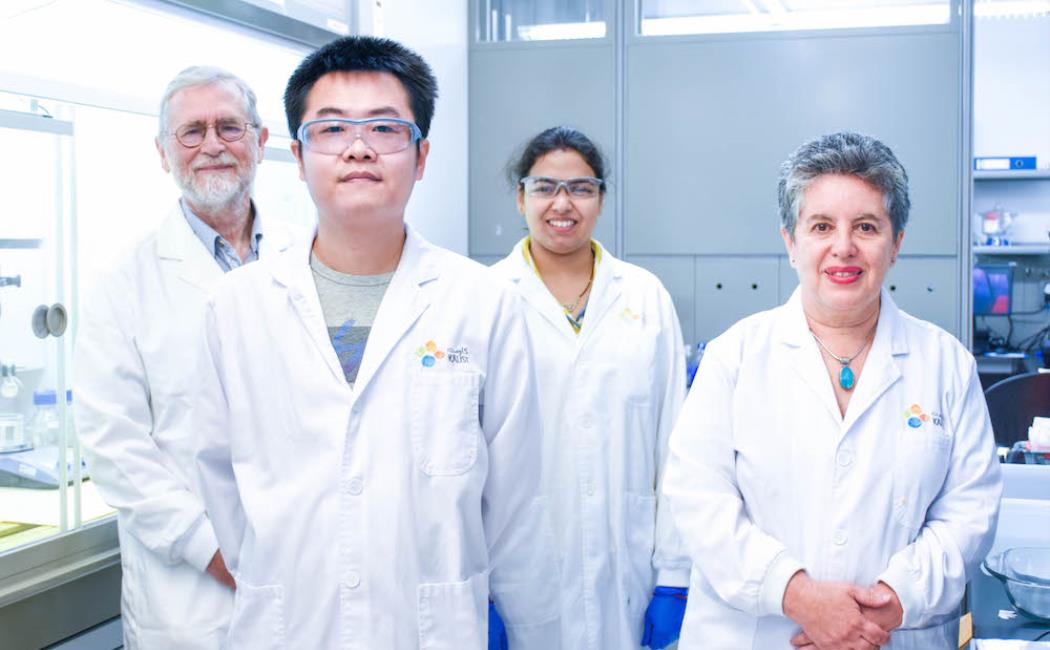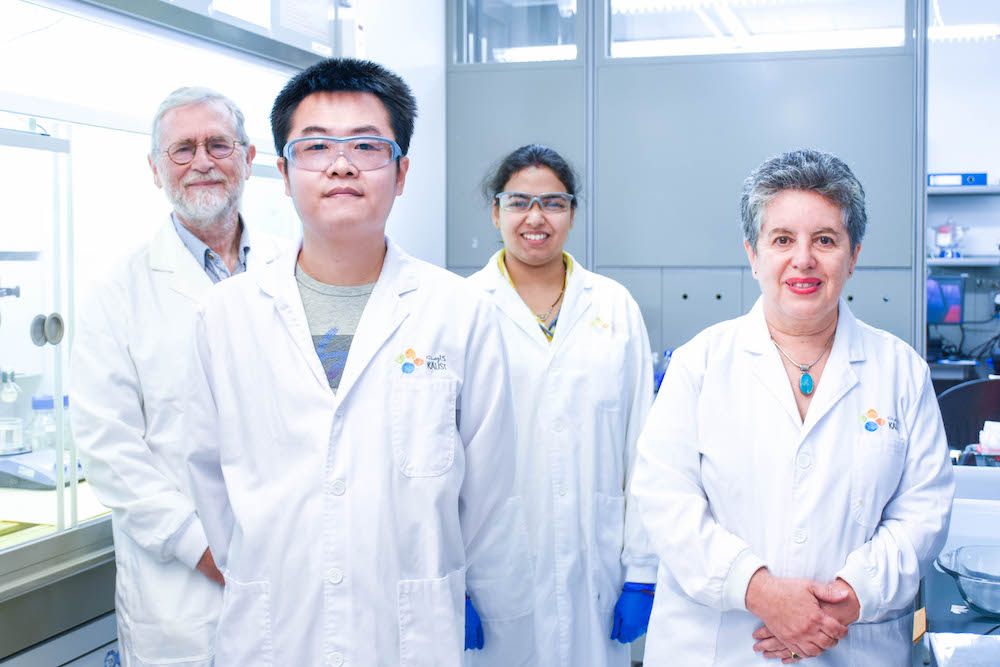A collaborative work between three AMPM Center’s research groups led by Klaus-Viktor Peinemann, Suzana Nunes and Zhiping Lai has been recently published in Science Advances and highlighted in Nature Middle-east.
Dr.
Tiefan Huang, the lead author, remarks that the published paper is “the first study using cyclodextrin as the main building blocks for substrate preparation”, which presents a great potential for catalyzing ‘hydrogenation’ reactions.
“Ultra-small metal nanoparticles (<1 nm) are formed as a result of the coordination sites and steric confinement. Since the cyclodextrin molecule consists of a cavity structure, we expected that this cavity acts as a channel for favorable reactants transport during the catalysis process,” Tiefan says.
The AMPM Center’s researchers report an outstanding improvement of the ability to catalyze chemical reactions comparing with the existing studies.
“The as-prepared cyclodextrin polymer networks (CPN), loaded with metal nanoparticles, is used as a heterogeneous catalyst and shows outstanding catalytic performance in the hydrogenation of nitro compounds and the Suzuki-Miyaura coupling reaction under mild conditions. The CPN support works synergistically with the metal nanoparticles, achieving high catalytic activity and selectivity,” he concludes.




